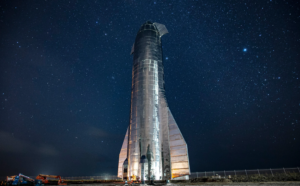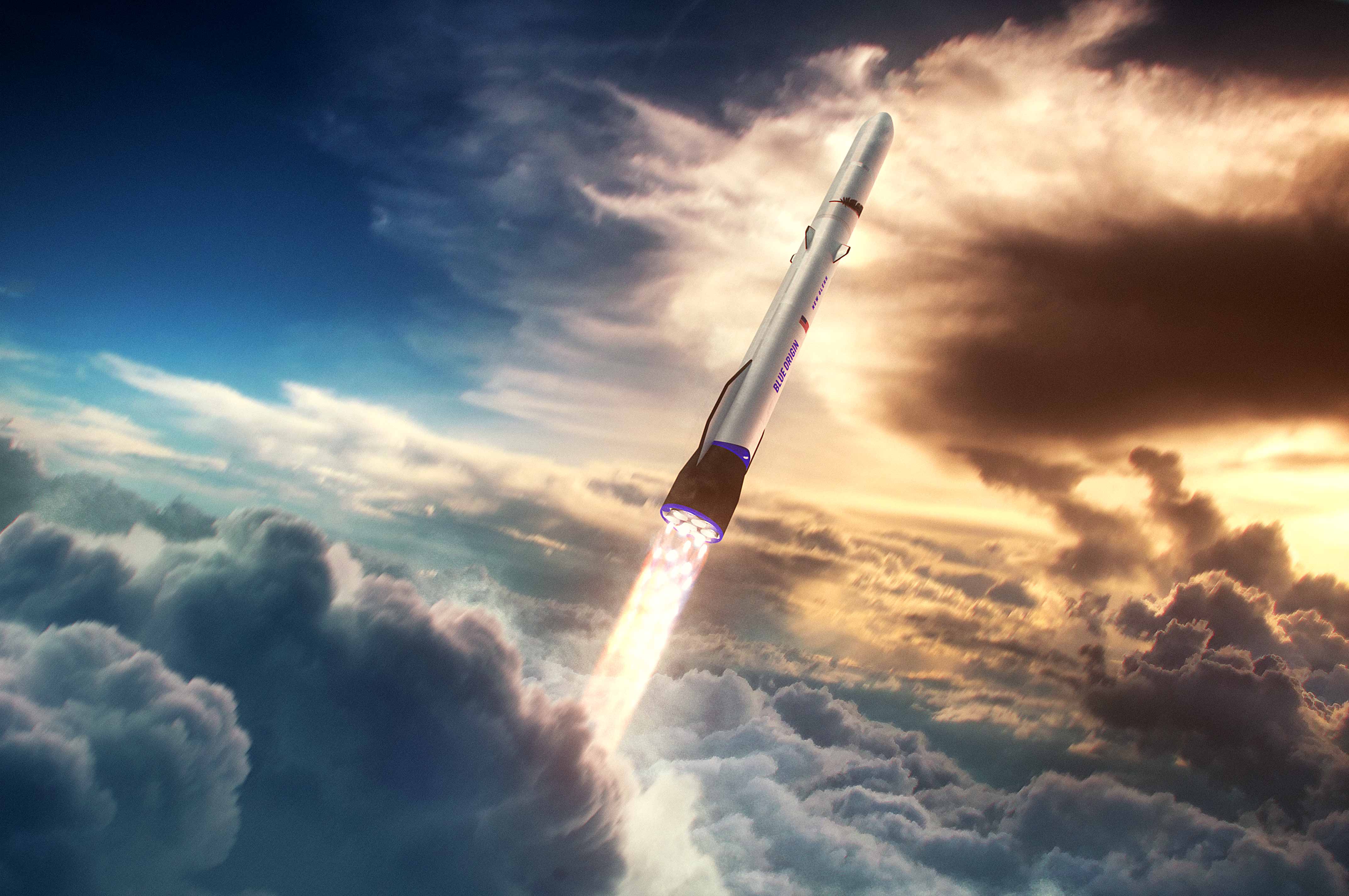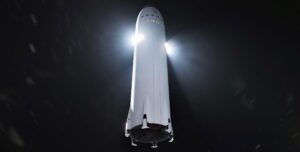
A Closer Look At The Improvements Made To Starship’s Next Prototype
There are a lot of very important differences between the Starship prototype we just saw lift off and the next booster expected to fly. In a recent interview, Elon talked about some of the improvements and why the next flight should be different. So much so that prior to Starship’s first flight, SpaceX just wanted the rocket to get in the air no matter the result so they could move on to the improved system.
SpaceX has a very different approach to rocket development and testing than most companies within the space industry. This process involves constant work on prototypes and learning as they go. This means the company ends up with flight ready test units that aren’t even close to the most upgraded and modern prototypes at Starbase.
Combine these physical upgrades and improvements with all the new information gained from Starship’s first flight, and the second test flight has the opportunity for much better results. Not to mention the pad upgrades and impact of Stage 0. Here I will go more in-depth into the improvements to Starship’s next system, how the new flight data will apply, what to expect in the coming weeks, and more.
Almost A New Rocket

Starship’s recent test flight was with Booster 7 and Ship 24. Even before the first launch, in an interview, Elon was quoted saying, “We are actually dying to get this rocket off no matter what happens to it because there are so many improvements between booster 7 and booster 9, literally hundreds. Some major ones, we moved from hydraulic thrust vector control to electric, and the entire heat shield structure on the base on Booster 9 is completely redesigned from Booster 7. Booster 7 has kinda a retrofitted heat shield system between the engines, and this is very important because if you think about 33 engines, if anyone of them goes wrong, it’s like having a box of grenades, really big grenades, and if one goes off you don’t want the others to go off also. We just want to take off and move on to Booster 9” he said.
Interestingly, a lot of this information and changes that Elon stated prior to the launch, were very relevant during the actual attempt and recent flight of Starship. For example, in another interview with Musk held just a few days ago he commented, “Rocket kept going through T+62 seconds” with the engines continuing to run. Lost thrust vector control at T+85 seconds.” Big thing for the next Starship launch is “ensuring that we don’t lose thrust vector control” with Booster 9. We got pretty close to stage separation … if we had maintained thrust vector control and throttled up, which we should have … then we would have made it to staging” he pointed out.
To add to this, the other big changes that he mentioned before the launch had to do with the booster heat shield and the Raptor engines being like a box of grenades. On Starship’s recent flight, we saw some small explosions with the engines during flight and the eventual loss of multiple Raptors. Elon was quoted after the mission saying, ” At T+27 seconds, SpaceX lost communications due to “some kind of energy event.” And “some kind of explosion happened to knock out the heat shields of engines 17, 18, 19, or 20.”
This comment from Musk highlights the correlation and value of these changes. In this case, improvements were specifically made to Booster 9 related to this exact problem and protecting the Raptor engines at the base of the rocket.
If the changes mentioned weren’t enough, Elon talked more about the improvements when he said, “The big things that are important for the next flight are, ensuring that we don’t lose thrust vector control, so isolating that thrust vector control. With Booster 9 that is a lot easier because we use electric motors to steer the engines as opposed to hydraulic actuators where you have a common manifold between the hydraulic actuators. In this case, if you lose hydraulic pressure you can lose multiple engines. The electrically actuated engines will be much more isolated and not have like a single event failure as long as they don’t lose power or coms” he said.
These are all different improvements in just the booster alone, not even the Starship upper stage and pad infrastructure. It’s important to point out that Elon also mentioned “SpaceX has yet to make a final decision on which Starship prototype and Super Heavy booster will fly the next launch. I think we’ll probably make that decision this week, but we do want to bet on success in the sense that if we make it to orbit it would be super helpful to try a deorbit and see how well the ship heat shield works. This is because we need to maintain control in a hypersonic high heating regime and then get through transonic and then maintain control all the way through a very wide array of regimes. Based on what he said, it looks like Booster 9 is practically guaranteed to be the next booster but they are still deciding on which ship will fly. Either way, whatever test article the company decides to go with, it will be almost a different rocket internally with all the changes made. Combine these physical changes made with the lessons learned and the next flight will hopefully have an even better result.
Flight Data & Funding

In addition to improvements with Starship and its prototypes, there was a lot of talk related to Elon’s future expectations with the program surrounding success and the cost of developing this rocket. In one quote he said, “Well, I’m hopeful we can get four flights out this year maybe 5. I would be surprised if we exit this year without getting to orbit. Probably an 80% probability of reaching orbit with Starship this year, and “I think close to 100% chance of reaching orbit within 12 months. SpaceX is quite good at production, like the best in history of any rocket production. I mean we are making a Falcon 9 upper stage which is a large complex machine every 3 or 4 days. We even slowed down Raptor engine production “because we’ve got more Raptors than we know what to do with” he commented.
This statement tells us a lot about what to expect in the near future. For one, it’s obvious the thing holding SpaceX back from launching again is not the production aspect. In regard to this, the main limiting factors are pad repairs, which seem to be making very fast progress, and vehicle testing which will begin once the pad is ready. He also is confident that they will perform another 4 launches this year. With it already being May this would mean a launch about every two months. While ambitious it could be possible. Assuming SpaceX installs the proper steel and protection under the pad to deal with the Raptor’s exhaust, the pad could be ready without significant repair after a launch. This would change the limiting factor to the pre-launch testing and production of Starship prototypes, which the company has gotten very efficient with.
When asked about funding and the future cost Elon replied, “Well, it’s probably a couple of billion dollars, around 2 billion dollars this year all in on Starship. We do not anticipate needing to raise funding. What we’ll do is provide liquidity to employees, but to the best of my knowledge, we don’t need to raise funding.” In this case, back in 2022, SpaceX raised nearly $2 billion over the course of two rounds and the company has collected about $9 billion in private funding since its founding in 2002. In the future, Starship is expected to play a very important role in the company’s revenue as it begins to launch Starlink. This one service could provide an immense amount of capital for the company and whatever endeavors they decide to take on.
In addition, late last year, NASA awarded a contract modification to SpaceX to further develop its Starship human landing system to meet agency requirements for long-term human exploration of the Moon under Artemis. With this modification, SpaceX would provide a second crewed landing demonstration mission in 2027 as part of NASA’s Artemis IV mission. Known as Option B, the modification follows an award to SpaceX in July 2021 under the Next Space Technologies for Exploration Partnerships-2 (NextSTEP-2) Appendix H Option A contract. NASA previously announced plans to pursue this Option B with SpaceX. The contract modification has a value of about $1.15 billion.
The aim of this new work under Option B is to develop and demonstrate a Starship lunar lander that meets NASA’s sustaining requirements for missions beyond Artemis III, including docking with Gateway, accommodating four crew members, and delivering more mass to the surface. NASA initially selected SpaceX to develop a human landing system variant of Starship to land the next American astronauts on the Moon under Artemis III, which will mark humanity’s first return to the lunar surface in more than 50 years. As part of that contract, SpaceX will also conduct an uncrewed demonstration mission to the Moon prior to Artemis III.
The agency is pursuing two parallel paths for human lunar landers developed according to NASA’s sustained requirements to increase the competitive pool of capable industry providers – the existing contract with SpaceX and another solicitation released earlier this year. The other solicitation, NextSTEP-2 Appendix P, is open to all other U.S. companies to develop additional human landing system capabilities and includes uncrewed and crewed demonstration missions from lunar orbit to the surface of the Moon. An important part of SpaceX’s future.
Conclusion
SpaceX is in the process of preparing for Starship’s next launch attempt. Already, a much-improved booster featuring a host of changes is practically ready for launch. These upgrades should have a significant impact on the results of this next flight. We will have to wait and see how it progresses and the impact it has on the space industry.



